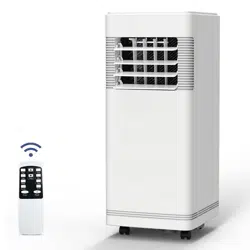Loading ...
Loading ...
Loading ...

3
ignition of refrigerant in the atmosphere from a leak.
Check that cabling will not be subject to wear, corrosion, excessive pressure, vibration, sharp edges, or any other
adverse environmental effects. The check shall also take into account the effects of aging or continual vibration from
sources such as compressors or fans.
Under no circumstances shall potential sources of ignition be used in the search or detection of refrigerant leaks. A
halide torch (or any other detector using a naked flame) shall not be used.
Electronic leak detectors shall be used to detect flammable refrigerants, but the sensitivity may not be adequate or
may need re-calibration. (Detection equipment shall be calibrated in a refrigerant-free area.) Ensure that the detector
is not a potential source of ignition and is suitable for the refrigerant used. Leak detection equipment shall be set at a
percentage of the LFL of the refrigerant and shall be calibrated to the refrigerant employed and the appropriate
percentage of gas (25 % maximum) is confirmed. Leak detection fluids are suitable for use with most refrigerants but
the use of detergents containing chlorine shall be avoided as the chlorine may react with the refrigerant and corrode
the copper pipe-work. If a leak is suspected, all naked flames shall be removed/extinguished. If leakage of refrigerant
is found which requires brazing, all of the refrigerants shall be recovered from the system, or isolated (using shut-off
valves) in a part of the system remote from the leak. Oxygen-free nitrogen (OFN) shall then be purged through the
system both before and during the brazing process.
When breaking into the refrigerant circuit to make repairs – or for any other purpose – conventional procedures shall
be used. However, best practices must be followed since flammability is a consideration. The following procedure
shall be adhered to:
- Remove refrigerant;
- Purge the circuit with inert gas;
- Evacuate;
- Purge again with inert gas;
- Open the circuit by cutting or brazing.
The refrigerant charge shall be recovered into the correct recovery cylinders. The system shall be “flushed” with OFN
to render the unit safe. This process may need to be repeated several times. Compressed air or oxygen shall not be
used for this task. Flushing shall be achieved by breaking the vacuum in the system with OFN and continuing to fill
until the working pressure is achieved, then venting to the atmosphere, and finally pulling down to a vacuum. This
process shall be repeated until no refrigerant is within the system. When the final OFN charge is used, the system
shall be vented down to atmospheric pressure to enable work to take place. This operation is vital if brazing
operations on the pipe work are to take place. Ensure that the outlet for the vacuum pump is not close to any
ignition sources and there is ventilation available.
In addition to conventional charging procedures, the following requirements shall be followed:
– Ensure that contamination of different refrigerants does not occur when using charging equipment. Hoses or
lines shall be as short as possible to minimize the amount of refrigerant contained in them.
– Cylinders shall be kept upright.
– Ensure that the refrigeration system is earthed before charging the system with refrigerant.
– Label the system when charging is complete (if not already).
– Extreme care shall be taken not to overfill the refrigeration system.
Before charging the system, it shall be pressure tested with OFN. The system shall be leak tested on completion of
charging but before commissioning. A follow-up leak test shall be carried out before leaving the site.
Before carrying out this procedure, the technician must be completely familiar with the equipment and all its detail.
It is recommended good practice that all refrigerants are recovered safely. Before the task is carried out, an oil and
refrigerant sample shall be taken in case analysis is required before the re-use of reclaimed refrigerant. Electrical
power must be available before the task begins.
a) Become familiar with the equipment and its operation.
b) Isolate system electrically.
c) Before attempting the procedure ensure that:
--mechanical handling equipment is available, if required, for handling refrigerant cylinders;
--all personal protective equipment is available and being used correctly;
--the recovery process is supervised at all times by a competent person;
--recovery equipment and cylinders conform to the appropriate standards.
d) Pump down the refrigerant system, if possible.
e) If a vacuum is not possible, make a manifold so that refrigerant can be removed from various parts of the
system.
f) Make sure that the cylinder is situated on the scales before recovery takes place.
Loading ...
Loading ...
Loading ...
